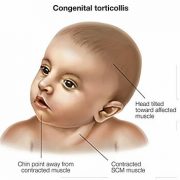Children develop neurologically and structurally (muscles, bones, joints) at rapid rates. The means of how they develop can impact their current health and future health into adulthood. Children are susceptible to structural misalignments from common falls related to play and sports. Overtime, a misaligned skeletal system will result in structural issues ranging from discomfort and pain, to scoliosis and even neurological issues, as spinal misalignments directly influence the function of the central nervous system. Misalignments resulting in nervous system compromise can result in musculoskeletal symptoms and other issues including bed wetting, allergies, asthma, colic, digestive issues, sensory and attention disorders, and developmental delays.
Brain Optimization
According to the Family Health Chiropractic, the function of the prefrontal cortex of the brain is improved by 20% by pediatric chiropractic. This part of the brain is responsible for the cognitive behavior, decision making, social behavior, and expression of personality in the children. Our nervous system is composed of two major parts: the brain and the spinal cord. The nerves generating from the spinal cord are maintained in a healthy state through chiropractic care. Proper movement of the spine directly stimulates brain function.
Improper movement of the spine, spinal subluxations or misalignments, can result in the following neurological symptoms:
- Sensory disorders
- ADHD
- Mood disorders
- Coordination issues
- Sleeping Issues
- Reflux
- Colic
The aboved neurological disorders can be managed with chiropractic care in order to allow a child’s nervous system to function at its best.
Skeletal Growth & Development
The birthing process can be a physically enduring process for baby, especially when interventions such as cesarean sections, vacuum extractions, and forceps are utilized. Birth traumas, and microtraumas from daily falls can over time result in spinal misalignments that directly influence structural development. Structural developmental issues commonly lead to scoliosis, growing pains, structural asymmetry, plagiocephaly, and postural deviations. Chiropractic care is a safe and effective way to help manage structural development. Optimal development occurs when children are under chiropractic care as early as possible. Some babies are adjusted right after birth to ensure proper structural growth and development.









